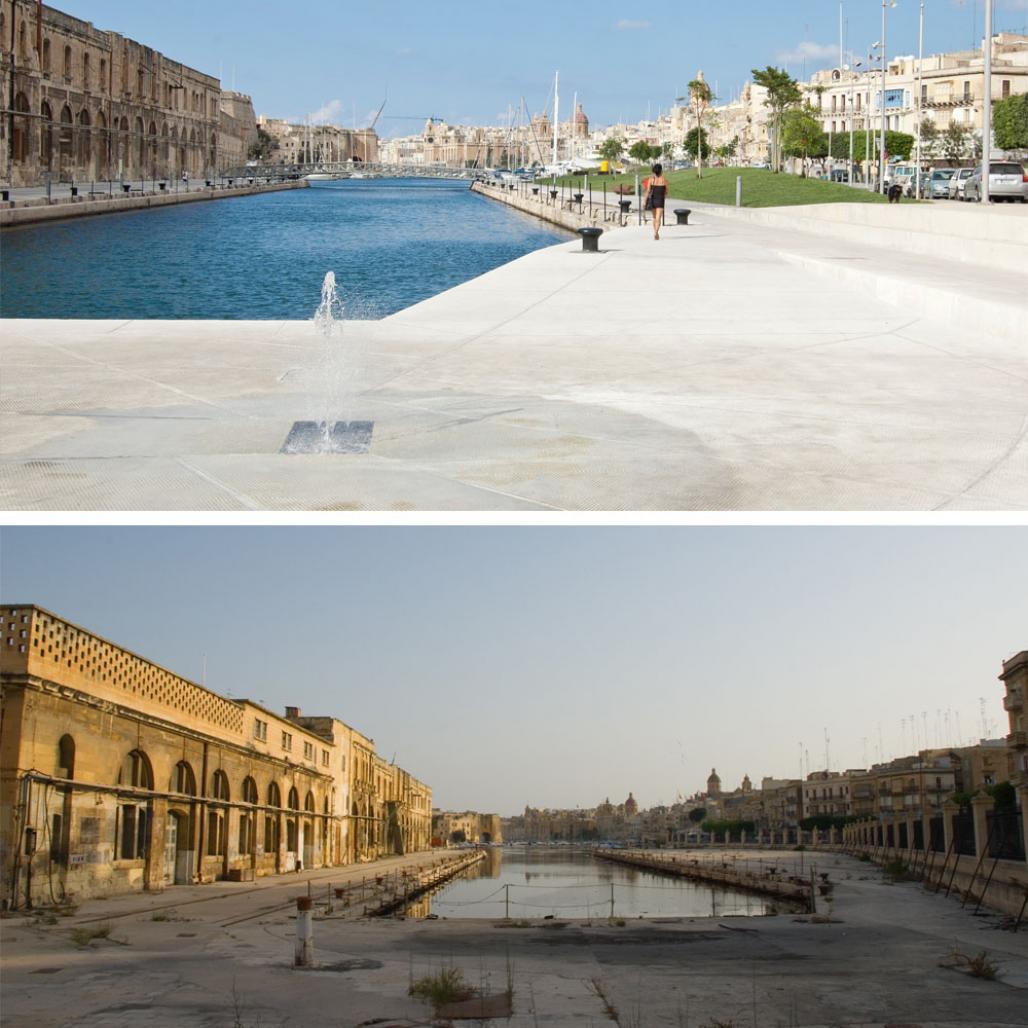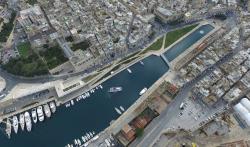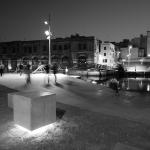The legacy of the dockyard ultimately was one of social separation – the entire waterfront was alienated from its surrounding community. The Cottonera Regeneration Project, by the Government of Malta and aided by funds from the European Union, aims at improving the Three Cities area and its waterfront, with Dock 1 to be considered a critical nodal-link in achieving the sustainable regeneration of the whole area.
Until the landscaping project was implemented, the waterfront was walled off to the public. For any regeneration to commence, both physically and socially, the removal of barriers to the waterfront was of the utmost importance. This social emphasis of urban regeneration is at the core of the landscaping project. The creek once again unites, rather than divides the residential quarters of the Three Cities, through a continuous 2.5km long promenade, linking Senglea’s and Vittoriosa’s waterfronts with gardens and public spaces, retaining the industrial heritage of the dockyard. The landscaping of the waterfront and public spaces around it can be viewed as a series of nodes (space of urban-gravitas).
The Dock 1 landscaping project has been in the making for a long time. Through dialogue with the local councils, local businesses, traders and NGOs, the project reads as a reactive design, sensitive to the needs of a community that for decades has suffered a decline in prosperity. The social and physical regeneration of the Dock 1 area is only a part of a greater renaissance project of this strange and unique portion of Malta’s identity, which in turn has allowed the restoration and preservation of an important part of Malta’s maritime and industrial heritage.
2009
2015
The Three Cities is a strange place. With its multiple names, it resembles a realm straight out of George R.R. Martin’s mind, with an Orwellian twist. Three micro cities jutting out like the open beak of a seagull into the Grand Harbour (a series of harbours within a larger harbour).
On entry through a tunnel-breach in the Cottonera Lines, flanked by War of the Worlds like cranes, over tarmacked roads, around soot stained buildings, under throngs of laundry hanging from balconies above, you arrive in the heart of it – Misraħ Gavino Gulia, at the head of Dock 1, the start of the latest public landscaping project. Wedged in between 16th century limestone bastions and Cold War post-war architecture, Dock 1 is found at the end of Dock Yard Creek, spreading on the shores of Vittoriosa, Cospicua and Senglea (The Three Cities). Malta’s development and importance owes much to this area. The Grand Harbour, specifically Dockyard Creek, have been used as a harbour since the Roman period.
Misraħ Gavino Gulia, was transformed from a busy round-about to a pedestrian-priority open piazza, and with the removal of the gate and wall it now extends to the water’s edge. Its landside perimeter is lined with shops and bars, turning the space into an established town-centre and gateway for visitors and locals to access either side of the waterfront. Each node is linked through the waterfront and street level promenade; a series of lawned dunes creating tiny pockets of public yet personal spaces, with the use of designed public-furniture; steel strapped wooden beam benches; concrete cubed seating and tables; all elements recalling the dockyard’s long industrial identity.
The dock itself was methodically restored, including the reinstatement of the dock-head, based on the historical research. Services and utilities were re-laid and buried all throughout the entire are, uncluttering the reclaimed public spaces, and several traffic calming measures were introduced to give priority to pedestrian flows.
Triq ix-Xatt ta’ Bormla runs the path to the Cospicua waterfront and Piazza Paolino Vassallo. Unlike the more traditional function of Misraħ Gavino Gulia, this piazza with the historical Rialto Cinema and old bars, is an opportune space to host social and cultural events, becoming one of Malta’s prime public cultural spaces, appealing to the locals as well as other cultural visitors.
From here you could go either of three ways; towards Senglea, across the new connecting bridge, spanning 45 metres over the creek, entering a stepped plaza, which again is set to be activated as an open cultural space (the Senglea side is part of another phase of the encompassing regeneration plan); continue through the dunes along the Cospicua waterfront; or ascend, past the Phytoremediation Tanks (see below), towards the belvedere, from where you obtain uninterrupted views of Dock 1, facing Senglea. Below the belvedere is storage space for the local maritime activity, and by the water’s edge a landing platform and waiting area for the various ferries. Further along the waterfront, a yellow steel framed pavilion with planters at its base creates a natural creeper-canopy over diners. The promenade continues towards the Birgu Waterfront, past Vault no.0 and a new public convenience, arriving at the Freedom Monument and the steps of the Church of St. Lawrence.
Vault no.0 houses NEPTUME, which forms part of the sustainable side of the landscaping project. NEPTUME (No-Discharge Energy-Efficient Prototype for the Treatment of Urban Municipal Effluent) is a research project, a wastewater treatment plant that purifies municipal waste from local sources. Another sustainable consideration was the lighting of the open spaces. The lighting design had to reflect the low energy expenditure that the project’s philosophy dictated. The energy consumption of the LED lighting for the entire 33,000 square metre site is equivalent to that of no more than a few households.
AP Valletta






